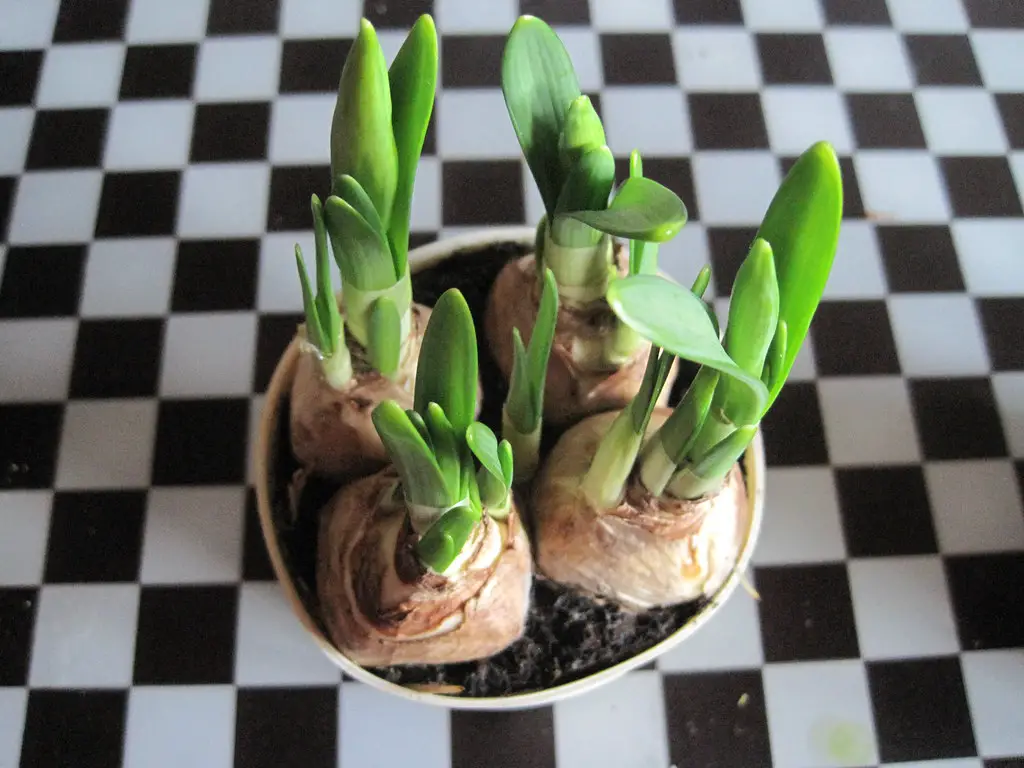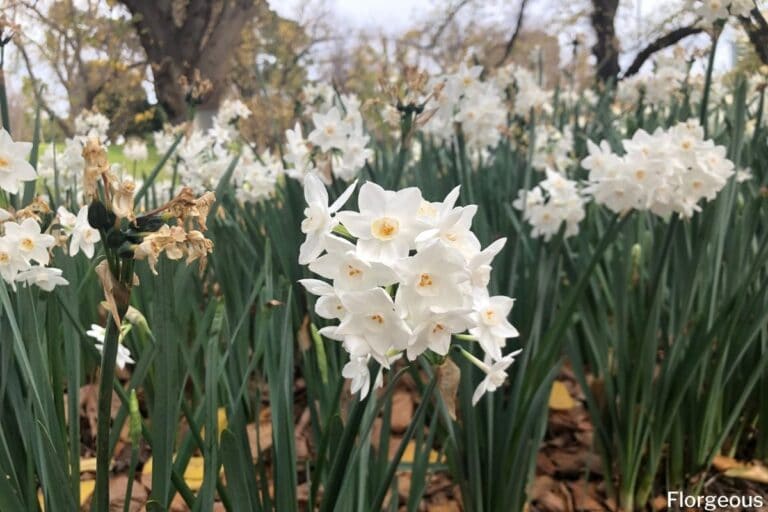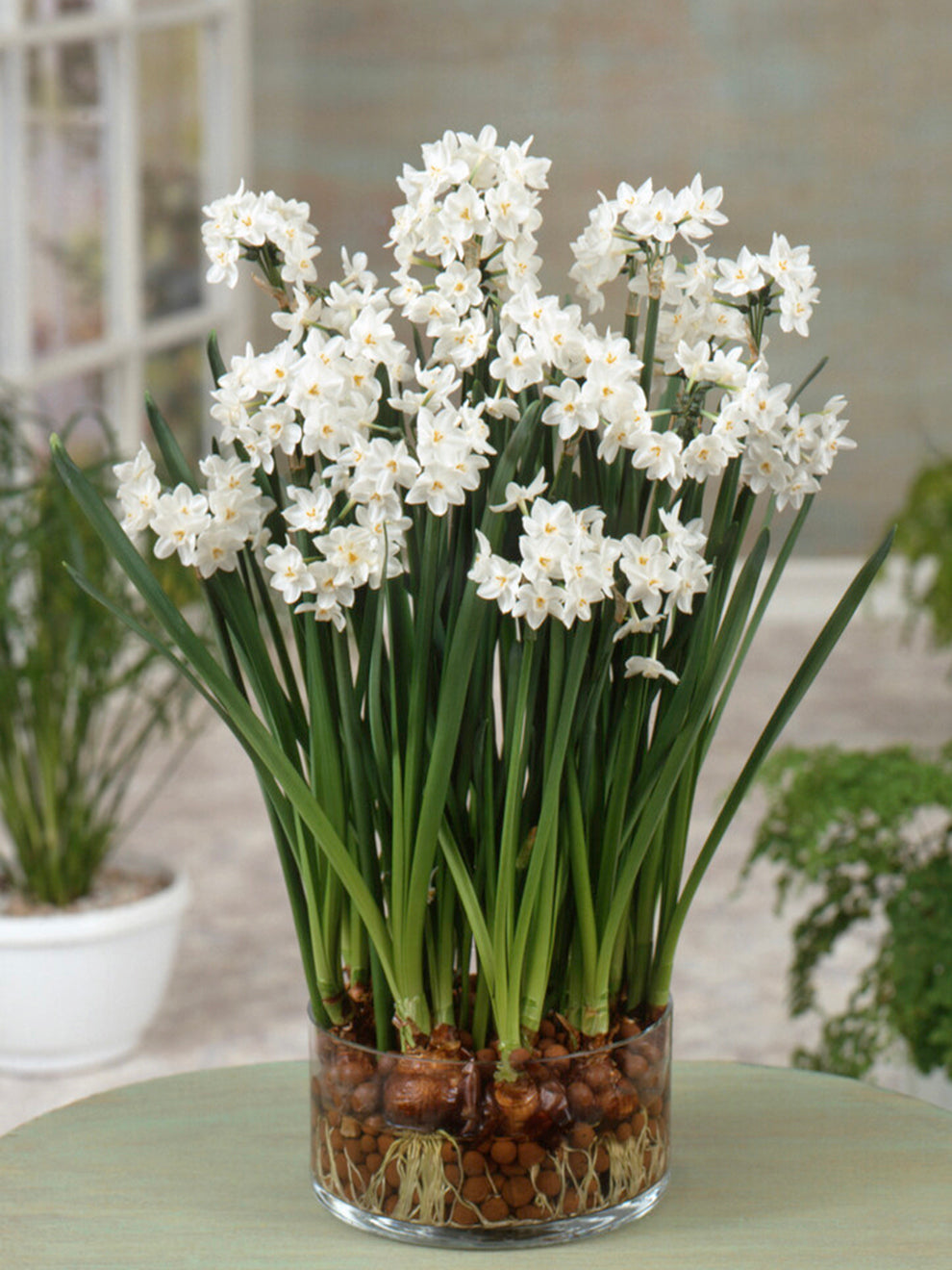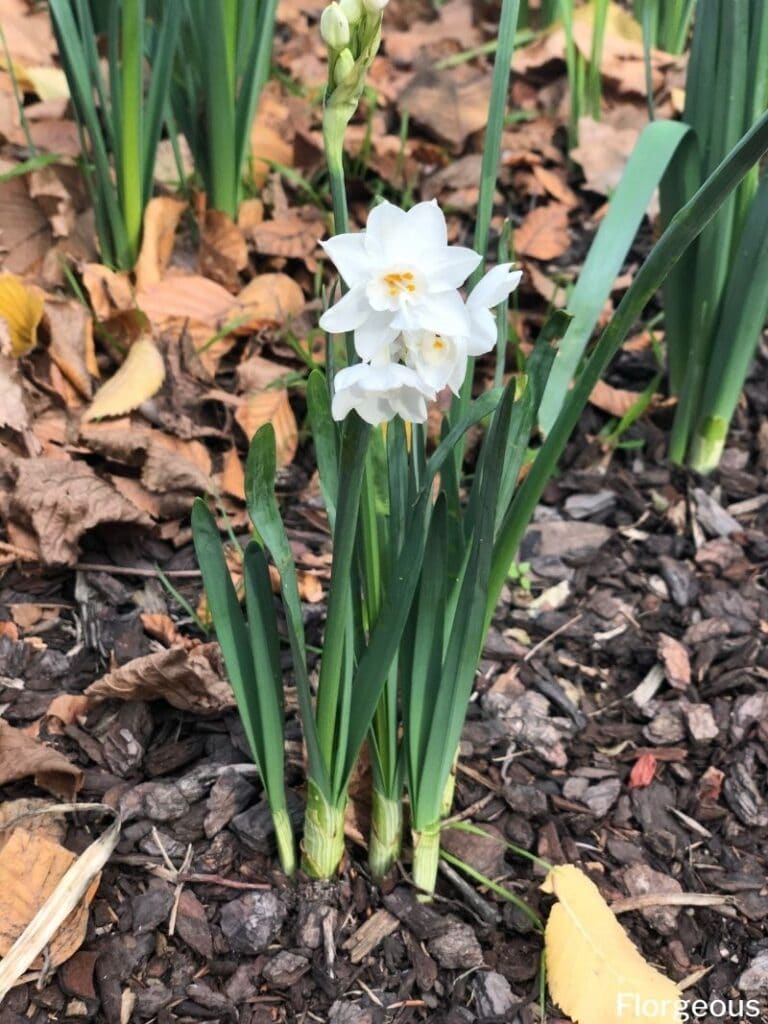Preparing the Soil for Optimal Growth
Preparing the soil for paperwhite narcissus is a crucial step in ensuring optimal growth and blooming. To create a suitable potting mix, combine a high-quality potting soil with compost and perlite or vermiculite. This will provide the right balance of nutrients and drainage for the bulbs. It’s also essential to avoid using regular garden soil, as it can compact and prevent proper drainage.
When selecting a potting mix, look for one that is specifically designed for bulbs or contains a high percentage of organic matter. This will help to retain moisture and nutrients in the soil. Additionally, consider adding a balanced fertilizer to the potting mix to provide essential nutrients for growth.
Well-draining soil is critical for paperwhite narcissus, as they are susceptible to root rot and other problems if the soil is too wet. To ensure good drainage, add a layer of perlite or vermiculite to the potting mix. This will help to prevent water from collecting in the soil and reduce the risk of root rot.
For those learning how to grow paperwhite narcissus, it’s essential to understand the importance of proper soil preparation. By creating a well-draining potting mix and adding essential nutrients, you’ll be able to provide the best possible conditions for growth and blooming.
When preparing the soil, also consider the pH level. Paperwhite narcissus prefer a slightly acidic to neutral soil pH, ranging from 6.0 to 7.0. If your soil is too alkaline, consider adding elemental sulfur or peat moss to lower the pH.
By following these tips and creating a suitable potting mix, you’ll be able to provide the best possible conditions for your paperwhite narcissus to grow and thrive.
Planting Paperwhite Narcissus: A Step-by-Step Guide
Planting paperwhite narcissus is a straightforward process that requires some basic knowledge and attention to detail. To ensure successful growth and blooming, follow these steps to plant your paperwhite narcissus bulbs.
First, choose a location with the right conditions for paperwhite narcissus, as discussed earlier. Make sure the area is well-draining and receives the right amount of light. Next, prepare the soil by loosening it to a depth of about 8-10 inches. If your soil is heavy clay or sandy, mix in some organic matter like compost or well-rotted manure to improve its structure.
Now, it’s time to plant the bulbs. Paperwhite narcissus bulbs should be planted in the fall, about 6-8 weeks before the first frost. Plant the bulbs 3-4 times deeper than the height of the bulb, and space them 3-6 inches apart. For example, if the bulb is 2 inches tall, plant it 6-8 inches deep. Water the soil well after planting and keep it consistently moist during the first growing season.
When handling the bulbs, make sure to wear gloves to protect your skin from the sap, which can cause irritation. Also, avoid planting the bulbs too close together, as this can lead to overcrowding and reduce blooming.
For those learning how to grow paperwhite narcissus, it’s essential to understand the importance of proper planting techniques. By following these steps and providing the right conditions, you’ll be able to enjoy the beautiful blooms of paperwhite narcissus in the winter months.
After planting, water the soil regularly to keep it consistently moist. Avoid overwatering, which can lead to rot and other problems. Also, provide support for the stems as they grow, using stakes or a trellis to keep them upright.
Watering and Caring for Paperwhite Narcissus
Proper watering and care are essential for the health and blooming of paperwhite narcissus. After planting, water the soil regularly to keep it consistently moist. However, avoid overwatering, which can lead to rot and other problems. Check the soil daily, and water only when the top inch of soil feels dry to the touch.
As the plants grow, provide support for the stems to keep them upright. Use stakes or a trellis to gently tie the stems to, making sure not to damage the bulbs. This will help prevent the stems from toppling over and promote better blooming.
When it comes to fertilizing paperwhite narcissus, a balanced fertilizer is recommended. Apply a low-nitrogen, high-potassium fertilizer once a month to promote healthy growth and blooming. Avoid using high-nitrogen fertilizers, as they can promote weak and leggy growth.
For those learning how to grow paperwhite narcissus, it’s essential to understand the importance of proper care and maintenance. By providing the right conditions and care, you’ll be able to enjoy the beautiful blooms of paperwhite narcissus for years to come.
Keep in mind that paperwhite narcissus are sensitive to extreme temperatures and humidity. Avoid placing them near heating vents, radiators, or drafty windows, as this can cause stress and reduce blooming.
By following these tips and providing the right care, you’ll be able to enjoy the beauty and fragrance of paperwhite narcissus in the winter months. Whether you’re growing them indoors or outdoors, with proper care and maintenance, you’ll be able to enjoy these stunning flowers for years to come.
Common Problems and Solutions for Growing Paperwhite Narcissus
Despite their relatively low-maintenance requirements, paperwhite narcissus can still be susceptible to certain problems. One of the most common issues is overwatering, which can lead to root rot and other problems. To avoid this, make sure to check the soil daily and only water when the top inch of soil feels dry to the touch.
Pests can also be a problem when growing paperwhite narcissus. Aphids, whiteflies, and spider mites can all infest the plants, causing damage to the leaves and flowers. To control these pests, use neem oil or insecticidal soap, and make sure to isolate infected plants to prevent the spread of disease.
Diseases such as narcissus fly and basal rot can also affect paperwhite narcissus. To prevent these diseases, make sure to plant healthy bulbs and avoid overwatering. If you do notice any signs of disease, remove the affected plants immediately to prevent the spread of infection.
Nutrient deficiencies can also be a problem when growing paperwhite narcissus. To ensure that your plants are getting all the nutrients they need, use a balanced fertilizer and follow the instructions on the label. Avoid overfertilizing, as this can cause more harm than good.
For those learning how to grow paperwhite narcissus, it’s essential to be aware of these potential problems and take steps to prevent them. By following these tips and providing the right care, you’ll be able to enjoy the beautiful blooms of paperwhite narcissus for years to come.
Another common problem when growing paperwhite narcissus is the tendency for the stems to become leggy and weak. To prevent this, provide support for the stems using stakes or a trellis, and make sure to plant the bulbs at the right depth.
By being aware of these potential problems and taking steps to prevent them, you’ll be able to enjoy the beauty and fragrance of paperwhite narcissus in the winter months. Whether you’re growing them indoors or outdoors, with proper care and maintenance, you’ll be able to enjoy these stunning flowers for years to come.
Forcing Paperwhite Narcissus for Indoor Blooms
Forcing paperwhite narcissus to bloom indoors is a great way to enjoy their beautiful flowers and fragrance during the winter months. To force paperwhite narcissus, you’ll need to provide them with the right conditions, including temperature, light, and water.
First, choose a container that is at least 6-8 inches deep and has drainage holes in the bottom. Fill the container with a well-draining potting mix, and plant the paperwhite narcissus bulbs 2-3 inches deep. Water the soil gently but thoroughly, and then place the container in a cool, dark place for 4-6 weeks.
After 4-6 weeks, move the container to a bright, sunny location with temperatures between 65-75°F (18-24°C). Water the soil regularly, but make sure not to overwater. You should start to see the stems and leaves emerging within a few weeks.
Once the stems and leaves have emerged, you can start to enjoy the beautiful blooms of your paperwhite narcissus. Make sure to provide support for the stems as they grow, using stakes or a trellis to keep them upright.
For those learning how to grow paperwhite narcissus, forcing them to bloom indoors can be a fun and rewarding experience. By providing the right conditions and care, you’ll be able to enjoy the beautiful flowers and fragrance of paperwhite narcissus in the winter months.
It’s also important to note that paperwhite narcissus can be forced to bloom multiple times, as long as you provide them with the right conditions and care. After the blooms have faded, you can cut back the stems and leaves, and then store the bulbs in a cool, dark place for 4-6 weeks before forcing them to bloom again.
By following these steps and providing the right care, you’ll be able to enjoy the beautiful blooms of paperwhite narcissus indoors, even in the dead of winter.
Post-Bloom Care: What to Do with Paperwhite Narcissus After Blooming
After paperwhite narcissus have finished blooming, it’s essential to provide them with the right care to ensure they can bloom again next year. One of the most critical steps is to deadhead the flowers, which means removing the spent blooms to encourage the plant to focus its energy on re-growing and storing energy for next year’s bloom.
To deadhead paperwhite narcissus, simply snip off the flower stem at the base, making sure not to damage the leaves or the bulb. This will help the plant to conserve energy and promote healthy growth.
In addition to deadheading, it’s also essential to fertilize paperwhite narcissus after they have finished blooming. Use a balanced fertilizer that is high in phosphorus, which will help to promote healthy root growth and encourage the bulb to store energy for next year’s bloom.
After fertilizing, allow the leaves to die back naturally, which can take several weeks. During this time, the bulb will be storing energy and preparing for next year’s bloom. Once the leaves have died back, you can cut them off at the base, and then store the bulbs in a cool, dark place until next year’s planting season.
For those learning how to grow paperwhite narcissus, it’s essential to understand the importance of post-bloom care. By providing the right care and attention, you’ll be able to enjoy the beautiful blooms of paperwhite narcissus year after year.
When storing the bulbs, make sure to keep them in a cool, dark place with good air circulation. Avoid storing them in airtight containers or plastic bags, as this can cause the bulbs to rot. Instead, store them in a paper bag or a breathable container, and check on them regularly to ensure they are not drying out.
By following these steps and providing the right care, you’ll be able to enjoy the beautiful blooms of paperwhite narcissus for years to come.
Tips for Growing Paperwhite Narcissus in Containers
Growing paperwhite narcissus in containers is a great way to enjoy their beautiful blooms in a small space. To grow paperwhite narcissus in containers, choose a pot that is at least 6-8 inches deep and has drainage holes in the bottom. Fill the pot with a well-draining potting mix, and plant the bulbs 2-3 inches deep.
When growing paperwhite narcissus in containers, it’s essential to provide them with the right amount of light. Paperwhite narcissus prefer bright, indirect light, but can tolerate some direct sunlight. Place the container in a sunny location, but avoid direct sunlight during the hottest part of the day.
Watering is also crucial when growing paperwhite narcissus in containers. Water the soil gently but thoroughly, and make sure not to overwater. Allow the soil to dry slightly between waterings, and avoid getting water on the leaves or flowers.
Fertilizing is also important when growing paperwhite narcissus in containers. Use a balanced fertilizer that is high in phosphorus, and follow the instructions on the label. Avoid overfertilizing, as this can cause more harm than good.
For those learning how to grow paperwhite narcissus, growing them in containers can be a fun and rewarding experience. By providing the right care and attention, you’ll be able to enjoy the beautiful blooms of paperwhite narcissus in a small space.
When choosing a container for growing paperwhite narcissus, make sure to select one that is large enough to accommodate the bulbs and has good drainage. Avoid using containers that are too small, as this can cause the bulbs to become waterlogged and rot.
By following these tips and providing the right care, you’ll be able to enjoy the beautiful blooms of paperwhite narcissus in containers. Whether you’re growing them on a balcony, patio, or indoors, paperwhite narcissus are a great choice for adding some winter beauty to your space.
Tips for Growing Paperwhite Narcissus in Containers
Growing paperwhite narcissus in containers is a great way to enjoy their beautiful blooms in a small space. To grow paperwhite narcissus in containers, choose a pot that is at least 6-8 inches deep and has drainage holes in the bottom. Fill the pot with a well-draining potting mix, and plant the bulbs 2-3 inches deep.
When growing paperwhite narcissus in containers, it’s essential to provide them with the right amount of light. Paperwhite narcissus prefer bright, indirect light, but can tolerate some direct sunlight. Place the container in a sunny location, but avoid direct sunlight during the hottest part of the day.
Watering is also crucial when growing paperwhite narcissus in containers. Water the soil gently but thoroughly, and make sure not to overwater. Allow the soil to dry slightly between waterings, and avoid getting water on the leaves or flowers.
Fertilizing is also important when growing paperwhite narcissus in containers. Use a balanced fertilizer that is high in phosphorus, and follow the instructions on the label. Avoid overfertilizing, as this can cause more harm than good.
For those learning how to grow paperwhite narcissus, growing them in containers can be a fun and rewarding experience. By providing the right care and attention, you’ll be able to enjoy the beautiful blooms of paperwhite narcissus in a small space.
When choosing a container for growing paperwhite narcissus, make sure to select one that is large enough to accommodate the bulbs and has good drainage. Avoid using containers that are too small, as this can cause the bulbs to become waterlogged and rot.
By following these tips and providing the right care, you’ll be able to enjoy the beautiful blooms of paperwhite narcissus in containers. Whether you’re growing them on a balcony, patio, or indoors, paperwhite narcissus are a great choice for adding some winter beauty to your space.
In addition to choosing the right container and providing the right care, it’s also important to consider the type of potting mix to use. A well-draining potting mix that is specifically designed for bulbs is ideal for growing paperwhite narcissus in containers.
By following these tips and providing the right care, you’ll be able to enjoy the beautiful blooms of paperwhite narcissus in containers. Whether you’re a seasoned gardener or just starting out, growing paperwhite narcissus in containers is a great way to add some winter beauty to your space.







